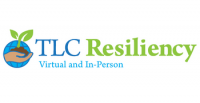Picture this: it is a beautiful sunny day and you are getting ready in the morning for a friend’s Fourth of July barbecue. This is an exciting day for so many reasons. Most of your loved ones have received the COVID-19 vaccine, and this is one of the first large gatherings you are attending since the world shut down a year and a half ago. What could go wrong?
For the most part, this day looks all too familiar to many of us this summer. However, if you are like most, you may have run into several social nuances that have been difficult to navigate in this post-pandemic world.
We have found ourselves asking,
“What greeting is this person comfortable with?”
“Have handshakes ever even been sanitary?”
“Should I still wear a mask when I run into the store, the employees still are?”
“ I used to give this person a hug when I saw them, what do I do now?”.
“What if these people are not vaccinated?”
With the start of life after the pandemic, we are now faced with re-examining our boundaries, our values and what we are comfortable with moving forward. For example, do you want to shake hands with people you meet at a dinner party? This physical boundary may be different for you today than it was a year ago, and that is okay.
What are boundaries?
Boundaries are limits that we set for ourselves, the space/distance we keep from other people or activities. Boundaries help preserve our mental health and decrease stress. Boundaries can be loose, healthy or rigid and can be categorized as physical, intellectual, emotional, material or time. For more on healthy boundary setting, click here.
According to social psychologist John Haidt, morality is born out of our instinctive need to survive. Boundaries are not arbitrary or capricious, they are established because of our need to live in harmony with each other. When a boundary is crossed or violated, we can have a visceral, emotional reaction. Sometimes it makes us angry, resentful and annoyed. As an example, if you have set a boundary with a family member to not ask for money because you are not comfortable lending and they do it anyway, this would elicit an emotional reaction within yourself.
When we understand, acknowledge and respect each other’s boundaries, we can have relationships that thrive. Setting boundaries for ourselves also means respecting other people’s boundaries, even if they may differ from our own. Respecting boundaries can help foster trust and communication and reduce unnecessary conflicts.
The science behind boundaries
The evidence that anthropologist Robin Dunbar discovered, known as the “rule of 150” has astonishing implications on boundaries. Dunbar studied thousands of different social networks from different time periods to examine how they operated and worked together. Everyone from early hunters and gatherers to your modern-day offices found a surprisingly similar pattern. When a group surpassed 150 people, it would collapse. This appears to be the magic number that gives humans the perfect amount of social connection while allowing them to not over-exert themselves. This combines what we know about social relationships- that they are critical to survival, but also that we have a limit to how much we can give of ourselves to others.
The relationship between the magic number ‘150’ and boundaries is more of a metaphor. We know we need social relationships to thrive, but we also know we need boundaries to flourish. Having boundaries, or keeping yourself from going past your threshold of what you can handle (like the hunters and gatherers who stayed at a group of 150), is essential for success and wellbeing.
As previously mentioned, we have dealt with a unique experience during the pandemic, and our bodies and brain have adapted to the changes we made while self-isolating during stay at home orders. It is very likely that our “magic number” of what we can handle and our threshold for social interaction might be lower than it was 2 years ago.
While it is unclear how long-term these changes in our tolerance will be, we know one thing for certain; we are adaptive beings, and will most likely adapt to or close to what we once could handle before pandemic. In the meantime, we need to work on figuring out our new boundaries, as well as respecting the boundaries of others.
What are some common boundaries you will be faced to examine at the present time? To name just a few:
- Are you comfortable spending time with people who are unvaccinated?
- Are you comfortable getting the vaccine?
- What greeting are you comfortable with?
- What spaces are you comfortable being in (i.e. outdoors, indoors)?
- Are there certain friends/family members you want to spend time with or not?
Psychological safety
Determining our boundaries, especially with coworkers, will be a collective challenge we will all face in the near future. How can employers and companies create an environment where re-setting boundaries is accepted, respected and an open conversation among coworkers? Fostering an environment of psychological safety is critical.
Psychological safety refers to a climate where all individuals feel comfortable expressing themselves, without fear of judgment or backlash. When we do not feel comfortable and fear being judged, we are less likely to ask for help or set boundaries when we need to. This can lead to a decrease in overall well-being, and even increase the likelihood of burnout.
In short, we work best when we work together. Learning to work together in the near future will also mean learning each other’s boundaries and comfort levels. It is through connection that we can build psychological safety in the workplace. Here is a short and incomplete list of ways to start helping your team and employees feel comfortable expressing themselves when returning to the office:
- Ask for feedback and ideas about safe ways to return to the workplace
- There is no way to find out what is working and not working for individuals if it is not openly discussed
- Be open and respectful to different opinions
- Everyone is a valuable member of the team, meaning that everyone’s voice is important. Make an effort to not judge and understand that others feelings are valid.
- Take time to really listen, be present and engaged
- When other people receive nonverbal cues that others are listening to them, they feel respected and will feel more comfortable being open and honest.
- Create a system that works for everyone
- Some creative ideas have worked in some workplaces, such as using color coded wristbands that indicate whether someone is comfortable with a hug, handshake or neither.
In summary, setting new boundaries will be essential to adapting to life after the pandemic and protecting our mental health. There are ways to help ourselves and others around us feel comfortable and accepted, regardless of what we are comfortable with.
Written by Jaclyn Gordon
https://moralfoundations.org
https://www.abajournal.com/magazine/article/fear-lawyering-psychological-safety
https://www.predictiveindex.com/blog/psychological-safety-in-the-workplace/

